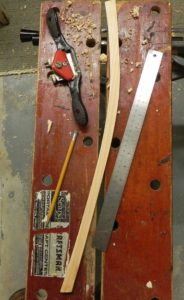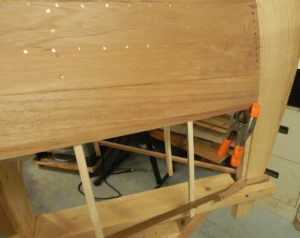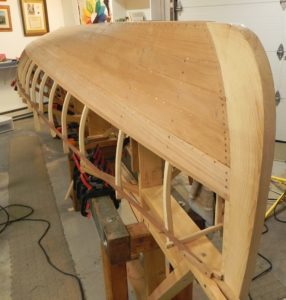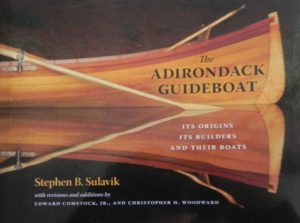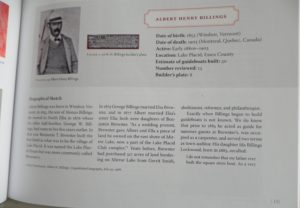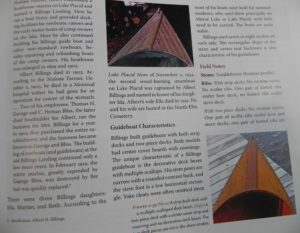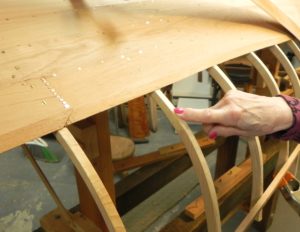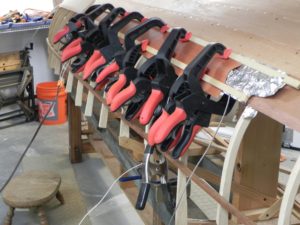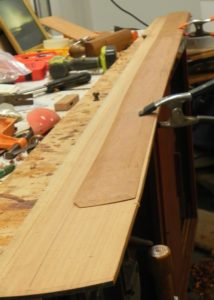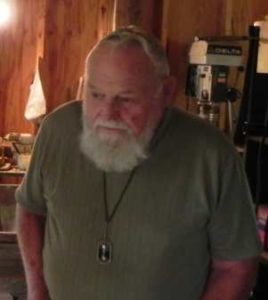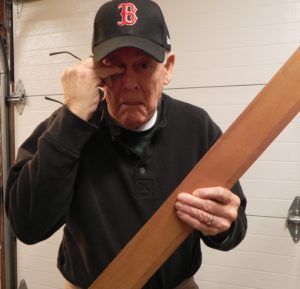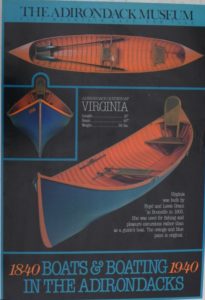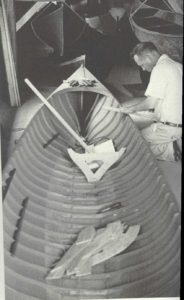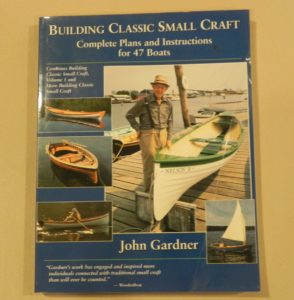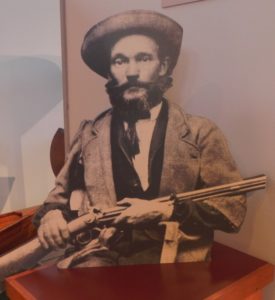The origin of the Adirondack guideboat has intrigued me ever since I became fascinated by this lovely craft. Did it truly originate within the bounds of the Adirondack Park or was it imported by someone from outside of the Park? It is such a creative masterpiece that I found it difficult to grasp that someone living in the vast Adirondack wilderness conceived and bore this object of worldwide acclaim.
As I came to know the native Adirondackers it became clear that, indeed, it could be a product of their creativity and hands-on talent. People of the Adirondacks today share the same natural abilities as their ancestors; they are practical problem solvers. Back in the mid 1800’s sportsmen started to trickle into the Adirondacks looking to enjoy the nearly limitless opportunities to hunt and fish. They needed a guide; someone to lead them in this wilderness that only few knew how to navigate. In turn the guides needed a boat, the only practical way to penetrate the maze of lakes and ponds. The boat had to satisfy contradictory requirements. It had to be light enough for the guide alone to carry between lakes and ponds. But it had to hold enough duffel for two men to exist in the wilderness for at least a week.
Suddenly, something I read Dr. Stephen Sulavik’s book The Origin of the Adirondack Guideboat connected the dots for me. Two builders he cited as being crucial to the development of the Adirondack guideboat had something in common. One of them, William Austin, lived at the northern end of Long Lake. The other, William McLenathen, began building boats for a hotel owner on the Saranac Lakes. Both began building boats around 1850. So what was the coincidence about them that stopped me dead in my tracks in my search for the origin of the Adirondack guideboat? They both immigrated to the Adirondacks from Vermont. So what, you say, that’s the land of milk and honey and maple syrup. But there is a very large lake there, Lake Champlain. Lake Champlain was a very important waterway during the Revolutionary War. If the Colonists held it they could threaten the British forces in Canada. Likewise, if the British held the Champlain waterway they could threaten New York City.
So Lake Champlain was humming with boat traffic during the Revolutionary War period. A major naval battle was fought there at Valcour Island in October, 1776. No doubt many smaller craft were employed to service the U. S. Navy during that time.
John Gardener’s book, Building Classic Small Craft, is a great resource for imagining the role row boats played in colonial America. Although he cites boating activity in Boston and Maine, I am sure the same conditions held true for Lake Champlain. John has an amazing sense of how small craft builders went about building boats in colonial and later times.
He is especially fond of the wherry, a flat bottomed (plank keeled) boat. It was rowed cross-handed (hmm, same as the guideboat). Their ribs were made of natural crooks or steam bent oak. Wherries were about 14 feet long and had a beam of about 4 feet. They originated in Old World England.
Gardner says they were built in the colonies by “amateurs”, or men not working regularly at building small craft. The term “amateurs” was not meant as a slur but only to designate that they built boats in their spare time. They were largely farmers and fishermen.
Gardner says that in Colonial New England (I am going to include the Champlain Valley here, as well) nearly everyone lived within sight of the water. Travel was generally easier by water than by land. Hitching up the horse and buggy took much more time than pushing off in your wherry. Gardner says” the small boat occupied the same place in the economic and social life as the auto does today”.
So what is known about the early days of boat building in the Adirondacks. You have heard me speak of Bunny Austin, of Long Lake, whose family of boat builders reaches back 5 generations. William Austin, Bunny’s great grandfather came to Long lake from Ferrisburgh, Vermont around 1850 and began building boats for sale and hire. (Ferrisburgh is at the southern end of Lake Champlain.) It is said that he built boats during the winter months and could build one a week. William had an excellent reputation as a boat builder and his boats sold for around $15. In a succeeding post we will talk about one of his boats that survives to this day.
Another builder, William McLenathen began building boats in the Lake Placid area about the same time. He worked in a boat shop that was part of a hotel owned by William Martin. Martin needed a constant supply of boats to satisfy the needs of his clientele. According to Sulavik’s guideboat book, McLenathen was the father of the Adirondack guideboat. His boats had a narrow square stern and provided a model for all succeeding guideboats. Here is a sketch of one of his boats.
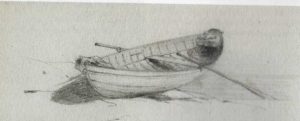
From Dr. Sulavikic’s The Adirondack Guideboat, Fig. 1-14. “A pencil sketch dated September 13, 1853, by T. Addison Richards of Harvey Moody’s Polly Ann. It is the same basic construction as the original boat, built by William McLenathen for W. F. Martin in 1851. The hull is rounded of clapboard-lapstrake construction, though not particularly slender, and the upright position indicates a flat bottom. Note the slight sheer, the yoke cleat, oarlocks pinned to the boards and the board seat. This sketch appeared in Harper’s New Monthly Magazine, August 1859. (Courtesy of the Adirondack Museum).”
So my suspicion that the guideboat originated with the bounds of the Adirondack Park was not the case. The basic design, a wherry, was brought to the Adirondacks by outsiders from Vermont who adapted it to the needs of the guides there.
In the next post we will talk more about how wherries were built by the colonists.
